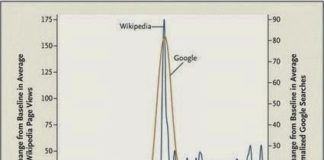Last week I attended a pharmaceutical industry conference focused on the problem of physician access or lack thereof by sales representatives. I heard a lot of advice from consultants as well as from physicians about how pharmaceutical companies need to change the number and kind of interactions between sales reps and physicians.
An article in this month’s Pharma Marketing News, Marketings Role in Limiting Physician Access and What to Do About It, for example, offers useful insight on how marketing can help sales reps communicate more effectively with physicians. The expert consultant cited in that article, Mr. Jerry Acuff, says that physicians want better relationships with sales reps and he cited a study showing that physicians ranked friendliness higher than scientific knowledge.
Physicians in a keynote panel at the same meeting, however, emphasized that they value a reps product knowledge over the relationship with the rep. The panel moderator also cited a new, unpublished study that supported this preference (when asked What do you like about sales reps? respondents cited product knowledge first, relationship second, and samples third).
The docs on the panel worried that the impending downsizing of the pharma sales force (see Cost-Cutting Strategies for the Pharmaceutical Industry) will remove the highest paid and most knowledgeable reps and leave behind the younger, less knowledgeable ones and thus exacerbate the dumb rep problem.
What the docs want are pharma representatives that keep them informed, protect them from prescribing the wrong drug, talk to them without regulatory constraints, and keep them stocked with samples. O yeah, they also wanted someone who talks like they do. In other words, they want another health professional and not a sales person at all! Ive heard the same from other doctors at other industry meetings (see, for example, A Crisis in Professional Detailing).
What if pharmaceutical companies actually listened to these physicians? Instead of talking about gaining physician access for sales reps, pharmaceutical companies might provide more access to the kind of representative physicians seem to want — the medical science liaison or MSL. Except lets drop the liaison part and just call them medical science representatives.
While I am not an expert on the current roles of MSLs and how often they are employed, I do sense a rivalry, lets say, between sales and marketing and the medical sciences department. I have been to conferences and had lunch with pharma medical education people and heard a few things. MSLs play, at best, second fiddle to the sales reps. That situation should, IMHO, be turned on its head. The MSL should be the primary contact and call in the rep when the physician asks for samples. After all, sample delivery is the primary reason sales reps gain access to physicians anyway.
I think this idea could also save pharmaceutical companies money. A lot fewer MSLs would be needed than the current number of reps. Docs would be more eager to see MSLs and not make them wait in the office or turn them away. Less time would be spent on unproductive calls and each MSL could service many more docs than a sales rep. The sales reps time would also be better managed because the docs would request their visit for the samples. At that time, the rep can still make the pitch without having to explain the value of the product — the MSL would have already done that.
This does not necessarily mean less of a role for marketers. There are many channels for physician marketing aside from the sales rep detail aid these days. As physician access by reps becomes more difficult, these other marketing channels offer better ROI. Maybe, at last, eMarketing might gain a foothold and provide further cost savings to pharma.
Or maybe not. Its not easy turning the pharmaceutical sales and marketing juggernaut on its head. But the games afoot, as Sherlock Holmes never said. Cuts in pharma sales and marketing spending are underway. Whether or not structural changes also are afoot I cannot say.
NOTE: Most of the articles cited in this post can be found in the March 2005 issue of Pharma Marketing News. You can obtain a complimentary copy of that newsletter by clicking here.









![6 Digital Tools at the Center of Healthcare Digitalization [INFOGRAPHIC]](http://ec2-54-175-84-28.compute-1.amazonaws.com/pharma-mkting.com/wp-content/uploads/2021/04/6DigitalTools_600px-100x70.jpg)




